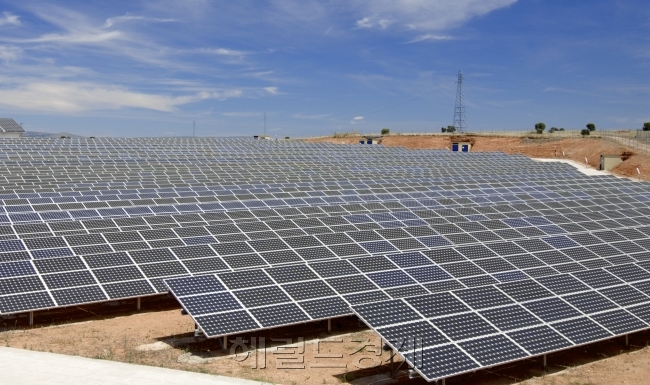[THE INVESTOR] In efforts to expand the environmentally friendly power supply system in Korea, the government will invest 42 trillion won (US$36.6 billion) in the renewable energy sector by 2020, the Trade Ministry said July 5.
Under the plan, new renewable power stations will be built by 2020 to produce 13 million kilowatts of electricity annually, an equivalent to that of 26 coal plants, according to the ministry.

In order to attain the goal, the ministry said it will raise its scheduled renewable portfolio standard to 5 percent in 2018 from an earlier target of 4.5 percent.
The rate will go up to 6 percent in 2019 and to 7 percent in 2020, up from earlier goals of 5 percent and 6 percent, respectively.
An RPS is a regulation that requires electricity supply companies to produce a certain portion of their energy from renewable energy sources such as wind, solar light, biomass and geotherm. For 2016, the RPS is set at 3.5 percent.
The ministry said individuals will also be permitted to sell the electricity produced by their own solar panels, while large commercial buildings can be equipped with 1,000 kW solar power generators to save on their utility bills.
It will also come up with detailed plans to allow renewable energy businesses, including energy storage system companies, to participate in the energy exchange market to attract more companies to make investments into the sector.
The Korea Electric Power Corp. is the only eligible player to buy and distribute electricity in the country.
“The government will lift unnecessary regulations and increase government support to foster the renewable energy sector,” Chae Hee-bong, deputy trade minister for energy and resource policies, said in a press briefing. “It will also help those businesses explore overseas markets.”
As of 2015, liquefied natural gas plants accounted for 33 percent of South Korea’s total power production, followed by coal plants with 22 percent and nuclear power with 22 percent.
(theinvestor@heraldcorp.com)
Under the plan, new renewable power stations will be built by 2020 to produce 13 million kilowatts of electricity annually, an equivalent to that of 26 coal plants, according to the ministry.

In order to attain the goal, the ministry said it will raise its scheduled renewable portfolio standard to 5 percent in 2018 from an earlier target of 4.5 percent.
The rate will go up to 6 percent in 2019 and to 7 percent in 2020, up from earlier goals of 5 percent and 6 percent, respectively.
An RPS is a regulation that requires electricity supply companies to produce a certain portion of their energy from renewable energy sources such as wind, solar light, biomass and geotherm. For 2016, the RPS is set at 3.5 percent.
The ministry said individuals will also be permitted to sell the electricity produced by their own solar panels, while large commercial buildings can be equipped with 1,000 kW solar power generators to save on their utility bills.
It will also come up with detailed plans to allow renewable energy businesses, including energy storage system companies, to participate in the energy exchange market to attract more companies to make investments into the sector.
The Korea Electric Power Corp. is the only eligible player to buy and distribute electricity in the country.
“The government will lift unnecessary regulations and increase government support to foster the renewable energy sector,” Chae Hee-bong, deputy trade minister for energy and resource policies, said in a press briefing. “It will also help those businesses explore overseas markets.”
As of 2015, liquefied natural gas plants accounted for 33 percent of South Korea’s total power production, followed by coal plants with 22 percent and nuclear power with 22 percent.
(theinvestor@heraldcorp.com)


















